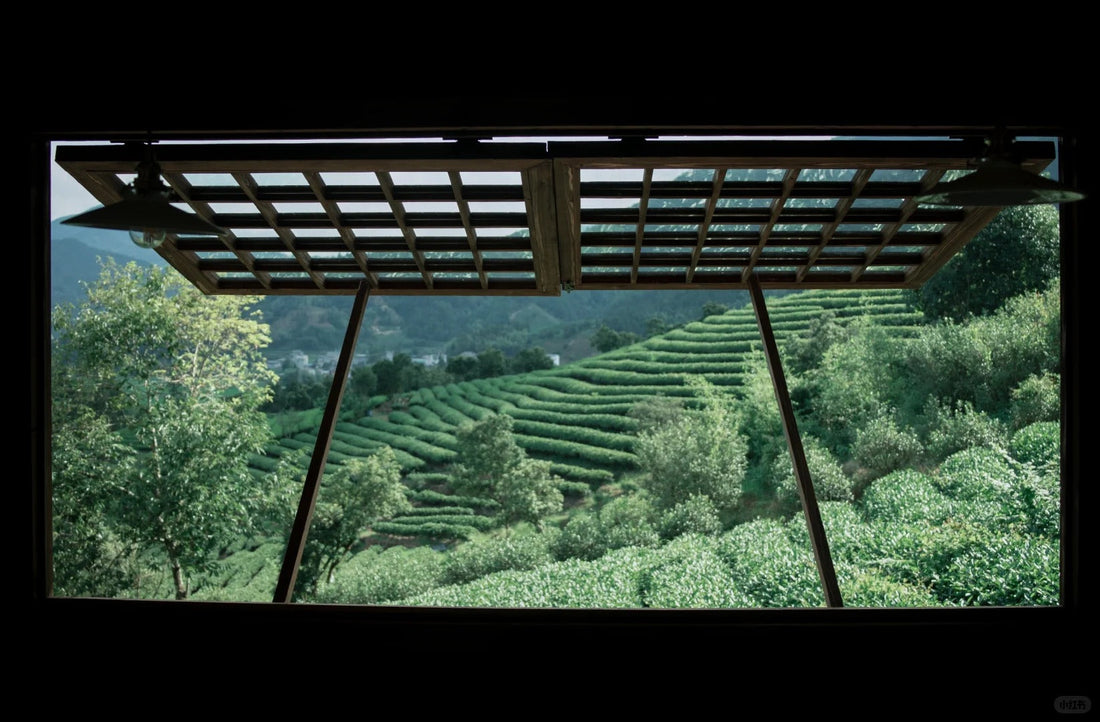Is Lapsang Souchong banned in Europe?

Share
Lapsang Souchong (or Zhengshan Xiaozhong) is by far the most popular Chinese black tea, featuring a distinct smoky aroma. However, in recent years, the European Commission has raised valid worries about smoked food and tea due to their potential carcinogenic properties. As a result, there's uncertainty regarding the availability of Lapsang Souchong in the European market. In this article, we'll discuss recent regulation in more details and clear any doubts you may have regarding this popular Chinese black tea.
What is Zhengshan Xiaozhong?

Zhengshan Xiaozhong, the first black tea in the world, originated in Tongmu Village (桐木关), Fujian. The area is located near Wuyi Mountain, a world natural heritage site and forest ecosystem nature reserve. The tea gardens in Tongmu are spread out across the ravines and valleys, making it challenging to locate large plantations. Instead, the tea bushes in this region grow naturally on the mountain slopes among weeds and rocks. Nowadays, the production area of Xiaozhong tea has expanded from Tongmu to the Wuyi Mountain area. The designation 'Zhengshan' means 'original Mountain' and is reserved for teas cultivated in the tea gardens of the Tongmu Village, while teas from other areas may be labeled as "Waishan Xiaozhong" (外山小种 or 'outer mountain') or "Yan Xiaozhong" (烟小种 or 'smoked Xiaozhong'). At last, 'Xiaozhong' refers to the small-leaf tea variety used for producing Lapsang Souchong.
Curious to try out the original, non-smoked Lapsang Souchong? Depending the country you reside in, you may order it trough our EU or Global (China) tea store:
Types of Lapsang Souchong
Besides the geographic classification, Lapsang Souchong teas may be divided into heavily smoked, lightly smoked and non-smoked.

Smoked Zhengshan Xiaozhong, undergoes the same production process as other gongfu black teas, except for the withering and drying stage. During these phases, the tea leaves are placed on grids, withered and dried using fumes from burning wood. The unique smoky flavor of this tea is derived from organic compounds that impart a spicy taste. To achieve this special aroma, the tea is made in a “Qing Lou”: a traditional three or four-floor building that allows the tea leaves to absorb the smoky essence from the burning pine. As a result of this method, Xiaozhong black tea develops a distinct smoky fragrance in both its dry form and as a brewed tea. This particular kind of smoked Lapsang Souchong is mainly made for the purpose of export to markets outside of China.

The orthodox lightly-smoked Zhengshan Xiaozhong undergoes the traditional method of production, but instead of smoking the tea, its roasted with pine wood, resulting in a natural and subtle smoky aroma. This also results in a distinct aroma of longan, pine wood, and honey sweetness. This type of Zheng Shan Xiao Zhong is mainly consumed in China, and also the type we offer at Teasenz.
This non-smoked version of Zhengshan Xiaozhong appear dark brown, while the heavily smoked version, due to the smoking process, is darker with a glossier appearance. Upon brewing, the non-smoked variant presents a bright reddish-orange color, whereas the smoked version yields a deeper hue. Both versions of Xiaozhong exhibit sweetness, with the non-smoked variety offering a sweeter taste compared to the smoked version.
Is smoked Lapsang Souchong really unhealthy?
As previously mentioned, European authorities have raised concerns about smoked teas due to the presence of Polycyclic aromatic hydrocarbons (PAHs), particularly PAH4, which are toxic, carcinogenic volatile molecules. These PAHs are known to adhere to the surface of tea leaves during the smoking process.
Several scientific studies have indicated that smoked tea leaves contain high levels of PAH4, which may exceed current standards. However, other studies suggest that the levels of PAH4 in smoked tea leaves are significantly lower than those found in other products, such as grilled meat. In summary, smoked tea is not considered to present significant health hazards.
At Teasenz, we do recommend to avoid heavily smoked Lapsang Souchong out of precaution.
Is Lapsang Souchong actually banned from Europe?
No, it's not banned. Certain domestic agencies within each EU country may hold a different opinion. Countries such as France and Germany have significantly heightened the standards for smoked tea established by the European Commission in 2015, effectively banning most smoked teas.
Following their new health standards implemented in 2017 by France and Germany, some producers have responded by incorporating techniques like filtration and roasting to create a safer version of Lapsang Souchong or replacing the traditional tea smoking process with artificial smoky flavouring.
Meanwhile, other farmers have opted to revise the wood used to smoke the tea leaves, selecting alternatives that produce lower levels of PAH4 when burned.
Replacing the original version can be a challenge, as Twinings struggled a while ago to replace it's on Lapsang Souchong blend with a new blend called Distinctively Smokey, which its fans described as stale cigarettes.
European regulations for smoked tea guarantee that any Lapsang Souchong smoked tea purchased in Europe can be safely consumed without the health hazards associated with smoke. Therefore, Zhengshan Xiaozhong is not banned, it is subject to strict regulation. Only smoked teas with elevated PHA4 residues are prohibited in Europe, have been removed from the market.
How to buy Lapsang Souchong tea that is safe for consumption?

Several types of Zhengshang Xiaozhong teas are available on the market: non-smoked, lightly smoked, and heavily smoked varieties. Therefore, determining the actual health risks associated with Lapsang Souchong can be challenging; in addition, consumption habits may differ among customers.
Avoiding too heavily smoked tea could be wise. To be on the safe side, we recommend to only order non-smoked teas. Luckily, like other black teas teas, Lapsang is actually full of antioxidants and may provide various health benefits such as improving digestion, aiding in weight loss, and enhancing the immune system.
Our Lapsang Souchong is not smoked and possesses a unique savoury sweetness reminiscent of Chinese dates and longan fruit, with subtle notes of pine wood, achieved through the application of traditional processing techniques.
